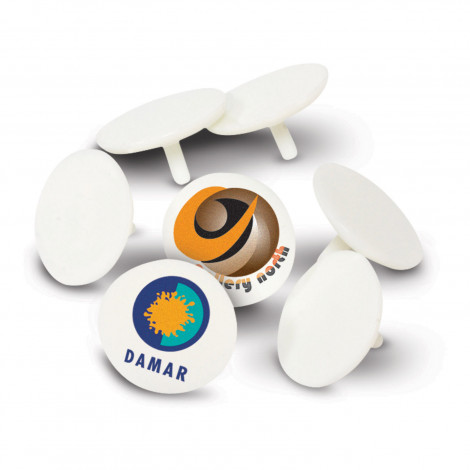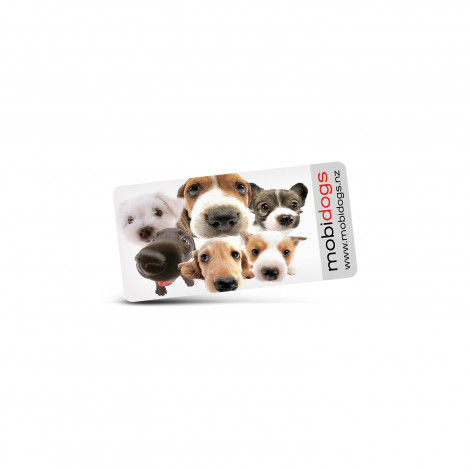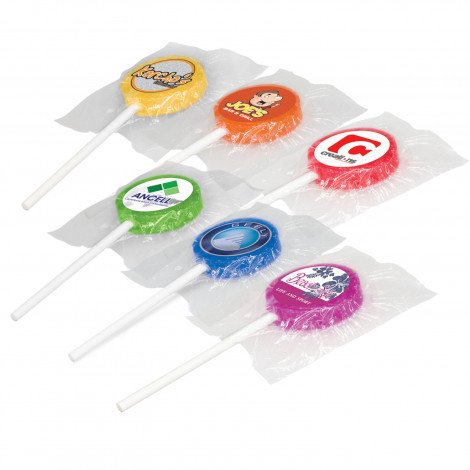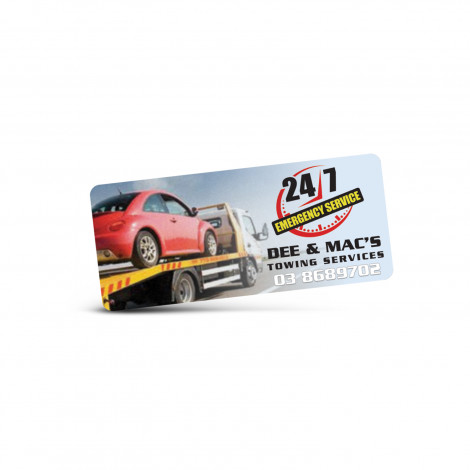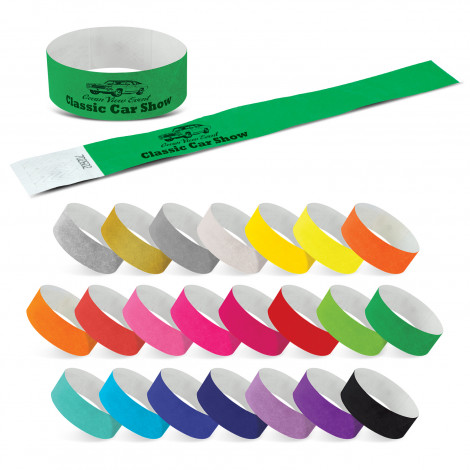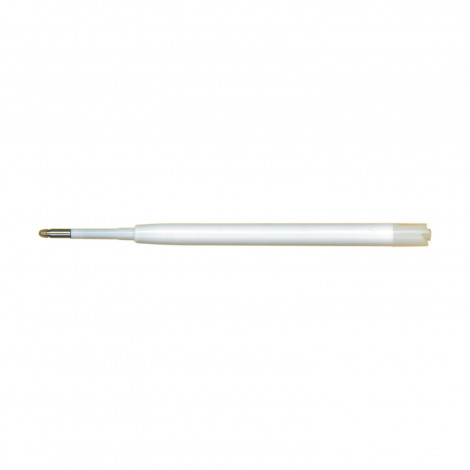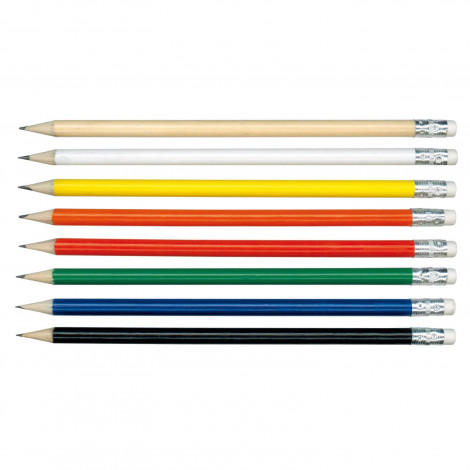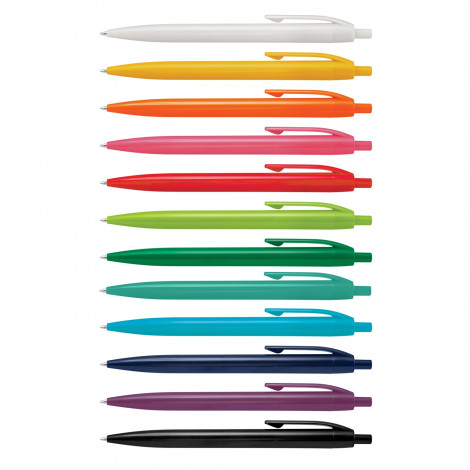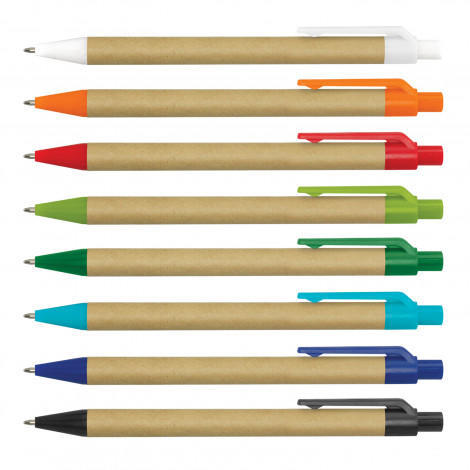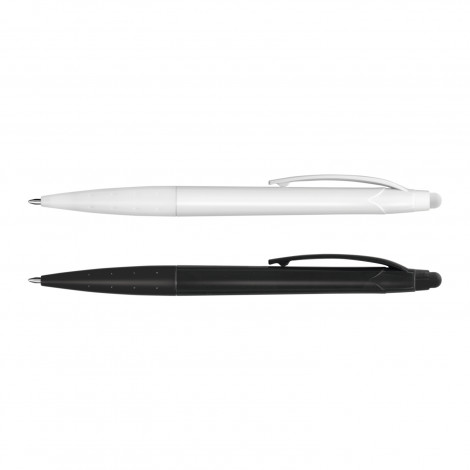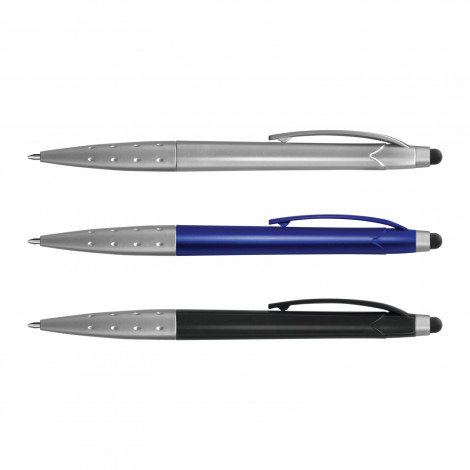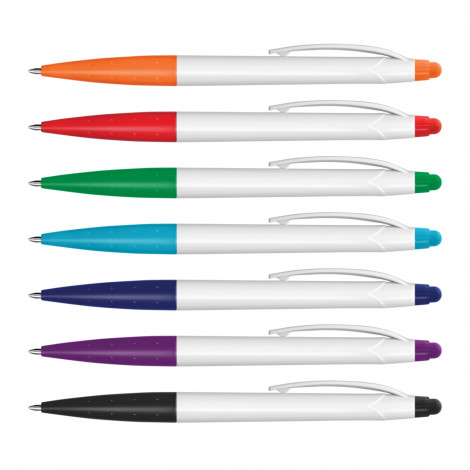How to Incorporate Brand Messaging into Your Promotional Products
.jpg)
Key Takeaways:
- Brand messaging plays a crucial role in promoting and establishing a brand's identity and values.
- Promotional products offer a tangible and effective way to incorporate brand messaging into marketing campaigns.
- Understanding the target audience and crafting an effective brand message are essential for designing promotional products that reflect the brand's identity and resonate with the intended recipients.

Photo Credits: Highqualitypromo.Com.Au by Joe King
Brand messaging plays a crucial role in establishing a strong corporate identity and connecting with target consumers. In this section, we will explore the significance of brand messaging and how promotional products act as powerful tools to communicate those messages effectively. Discover the impact of strategic brand messaging and the role that promotional products play in amplifying and reinforcing a brand's identity in the minds of consumers.Importance of Brand Messaging
The importance of brand messaging is that it can make the values, personality, and special traits of a brand stand out to its target audience. It's like a consistent and unified voice in order to show the brand's identity and set it apart from rivals. Through strategic brand messaging, firms can build strong bonds with their buyers, make trust, and leave lasting impressions. It also has a major part in influencing consumer thoughts and swaying buying decisions.
By creating an eye-catching brand message, businesses can express their main points to their target market. This includes understanding their needs, likes, and motives. By customizing the messaging to reach specific audience categories, companies can snag their attention and keep them interested. Also, targeted messaging gives brands the chance to relate better to customers by dealing with their trouble spots and providing solutions that fit their unique needs.
It's vital to have a distinct brand identity for effective brand messaging. This means inventing a positioning statement that simply states the brand's value offer and competitive edge. A vision statement also helps in coming up with the brand's messaging strategy by setting out the long-term objectives and aspirations of the company.
Designing an effective brand message needs careful selection of words, tone, and visuals that agree with the desired opinion of the brand. This message should be used in every marketing campaign across various channels to make sure the customers have a similar experience.
Adding brand messaging to promotional products adds more visibility for the brand. Choosing the right promotional products can back up the desired image and values of the brand and provide value to buyers. Making these products according to the overall branding plan ensures visual unity and further enhances brand recognition.
To measure the success of brand messaging, businesses can use social media listening tools to get feedback from customers. Following customer feedback allows firms to assess reactions to their messages and make the required changes to increase engagement and effect.
In conclusion, incorporating strong and steady brand messaging into promotional products is vital for developing a special brand identity, connecting with target audiences, and influencing buying decisions.
Role of Promotional Products in Brand Messaging
Promotional products are vital for brand messaging. They help companies express their identity and message to their target audience. Using them in marketing campaigns makes a lasting impression. Pens, keychains, apparel - these products can reinforce a company's brand messaging. They offer a direct route to the target audience. With the right research, businesses can create messaging that resonates with different customer segments.
Promotional products also show a company's brand identity. Products, colors, logo placement, design elements - all can be tailored to the brand message. This makes sure the message is consistent across channels. Promotional products help market the brand and create strong brand loyalty. With target audience insights, your brand message hits the bullseye and keeps them hooked.
Understanding Your Target Audience

Photo Credits: Highqualitypromo.Com.Au by Daniel Young
Understanding your target audience is crucial when incorporating brand messaging into your promotional products. In this section, we will explore the importance of identifying your target audience and how to create targeted messaging specifically tailored to different audience segments. By delving into the needs, preferences, and demographics of your audience, you can develop promotional products that resonate with them on a deeper level, leading to increased brand engagement and loyalty.Identifying Your Target Audience
Uncovering your desired demographic is a must for successful brand messaging. Identify their particular demographic, psychographic, and behavioral characteristics and tailor your message to reach them. This helps make a strong bond and build up brand loyalty.
- Demographic facts such as age, gender, location, and income level can give hints into the wants and needs of your target demographic.
- Psychographic factors like interests, values, attitudes, and lifestyle choices can help recognize their motivations and selections.
- Behavioral data including buying habits, brand interactions, and online behavior let you split your audience based on their activities.
- By means of market research and customer surveys, you can get information that provides useful details about your target audience.
- Unearth key influencers or thought leaders within your target audience to get a better insight into their requirements and preferences.
- Audience segmentation enables personalised messaging that speaks directly to the special difficulties or desires of several groups of people.
Including these elements in your brand messaging plan guarantees you are delivering the right message to the right people at the right time. It helps you broadcast the value proposition of your brand and differentiate yourself from the competition. By understanding your target audience properly, you can create messages that touch them emotionally.
By examining data from social media monitoring tools or conducting customer feedback surveys, you can also get distinct details about the preferences and behaviours of your target audience. Assessing this feedback can help fine-tune your messaging strategy over time. Understanding your target audience is a continuous process that requires constant observation and adjustment to stay applicable in a rapidly changing market environment.
Achieve success with tailored messaging that speaks right to your audience's hearts...and wallets!
Targeted Messaging for Specific Audiences
Tailoring messages to specific audiences is essential for successful brand messaging. Understand the needs, preferences, and behaviors of each segment. This way you can create messages that resonate with them. Get to know your target audience by researching their demographics, psychographics, and other characteristics.
Customize your promotional products to cater to each segment. Use language, imagery, or offers that speak directly to them. This increases relevance and encourages engagement.
Brand messaging campaigns are like creating a Tinder profile - you want to make a lasting impression, but the right kind! Targeted messaging helps you do just that.
Defining Your Brand Identity

Photo Credits: Highqualitypromo.Com.Au by Sean Miller
Defining your brand identity is crucial when it comes to incorporating brand messaging into your promotional products. In this section, we will explore two key steps: creating a brand positioning statement and developing a vision statement. These steps will lay the foundation for effectively communicating your brand's values, positioning, and aspirations through promotional products.Creating a Brand Positioning Statement
Creating a brand positioning statement is a must for establishing your brand's identity in the marketplace. You need to define what makes your brand special and how you want to be seen by your target audience. Crafting a clear and concise statement is key to communicating your brand's value and benefits to potential customers.
A well-crafted statement has various elements. It includes identifying your target audience, learning their preferences, and developing messaging that appeals to them. Research and analysis are needed to figure out your brand's specific qualities that make it relevant and attractive.
When crafting a statement, consider both short-term goals and long-term vision. Your statement should include your current value proposition and also show the future direction you want your brand to take. Adding a vision statement helps outline the goals and aspirations of your brand and guides decision-making processes.
It's important to have an effective message that captures the essence of your brand and speaks to your customers' needs. Spread this message through social media, advertising, and promotional items. When choosing promotional products, make sure they are useful and relevant, and reflect your key messages. Consider color schemes, logos, slogans, and taglines to ensure they promote your brand messaging.
Envision the future and turn dreams into reality when creating your brand positioning statement.
Developing a Vision Statement
A vision statement is vital for a brand's growth. It outlines a company's long-term goals and ambitions. Crafting the statement involves understanding the core values and purpose of the brand. It needs to include the brand identity, target audience, and industry trends. To make sure the vision reflects the collective aspirations and ambitions of the workforce, get input from key employees.
The vision statement should be concise and meaningful, expressing the brand's ambitions. It serves as a guide for the organization, helping it make strategic decisions and shape its future. As the business landscape changes, the vision statement must be updated. Brands must review and refine their vision statement to stay relevant and in line with their objectives.
By having a clear and impressive vision statement, brands can build trust and promote long-term success.
Developing a Brand Messaging Strategy

Photo Credits: Highqualitypromo.Com.Au by Randy Baker
Crafting an effective brand message and incorporating it into marketing campaigns are key elements in developing a successful brand messaging strategy. By aligning your brand message with your promotional products, you can create a powerful and cohesive marketing approach that resonates with your target audience. With careful planning and strategic implementation, you can leverage the potential of promotional products to enhance your brand message and drive impactful marketing campaigns.Crafting an Effective Brand Message
Crafting an impactful brand message is essential for successful communication. It should evoke emotions, build a connection, and separate the brand from competitors. Businesses must identify their ideal customers: their values, and how they prefer to receive info. Market research and customer data can help.
Businesses should create a positioning statement that conveys the brand. Also, a vision statement that outlines long-term goals. Incorporate the message into marketing campaigns like social media, emails, and content marketing.
Promotional products can reinforce the message. Choose items that fit the brand's values and resonate with the target audience. Design the products to reflect the message.
Evaluate the message's effectiveness by monitoring customer feedback in real-time. Adjust if needed.
Incorporating Brand Messaging into Marketing Campaigns
For effectively communicating a brand's identity and values to the target audience, incorporating brand messaging into marketing campaigns is essential. This helps build a strong image and better connection with customers, leading to increased loyalty, recognition and sales.
Craft a resonating brand message that meets the needs and wants of the audience. Align it with their values and aspirations for a memorable, impactful campaign.
For reinforcing the brand identity, pick promotional products that match the brand values and messages. Customize them to convey certain messages or evoke emotions.
Evaluate the effectiveness of the brand message by monitoring customer feedback on social media. Get insights to understand how well your message resonates with the target audience. Make adjustments to enhance its impact.
Incorporating brand messaging into marketing campaigns: Where slogans come to life and products become billboard-worthy ambassadors.
Incorporating Brand Messaging into Promotional Products

Photo Credits: Highqualitypromo.Com.Au by Ralph Allen
In this section, we explore the art of incorporating brand messaging into promotional products. Discover how to choose the right promotional products and design them in a way that effectively reflects your brand's message. Backed by relevant data, we'll uncover strategies to make your brand stand out in the sea of promotional items, ultimately boosting brand recognition and customer engagement.Choosing the Right Promotional Products
Identify the purpose:
- Understand what you want to achieve with your promotional products.
- Boost awareness?
- Increase loyalty?
- Drive sales?
Evaluate relevance:
- Check that the products align with your brand identity and values.
- Are they in line with your message and relevant to your target audience?
Assess quality:
- Pick products that are of high quality.
- It'll raise their perceived value and make your brand look good!
Consider usability:
- Choose useful things that your audience can use often.
- This will give your brand more visibility.
Customize effectively:
- Put your logo, slogan or message on them.
- Make it eye-catching and memorable!
By considering these factors, you can ensure your promotional products work well for your brand messaging. Get feedback from customers and track the impact. This info will help you refine strategies and pick better products in the future.
Design promotional products that clearly show your message - subtlety isn't cool!
Designing Promotional Products to Reflect Brand Messaging
To successfully convey a brand's message, promotional products are essential. Designing these products should be done with the target audience in mind. Colors, fonts, and imagery must be consistent with the brand's identity. Additionally, slogans, taglines, and visuals must reinforce key messages and values associated with the brand. This helps create a lasting impression. It also ensures that the target audience can effectively connect with the brand. Finding the perfect balance between promoting the brand and sounding like a desperate car salesman is key.
Implementing and Evaluating the Effectiveness of Brand Messaging

Photo Credits: Highqualitypromo.Com.Au by Paul Young
When it comes to implementing and evaluating the effectiveness of brand messaging, two key components come into play. First, we have the method of utilizing social media listening for feedback, which can provide valuable insights into consumer perception. Additionally, tracking brand messaging success with customer feedback allows for a comprehensive evaluation of its impact. By delving into these sub-sections, we can uncover essential strategies that help businesses refine and optimize their brand messaging strategies.Utilizing Social Media Listening for Feedback
Tappin' into today's digital age, social media is an amazin' tool for businesses to engage with their audience. Listenin' to feedback enables brands to get info from various platforms and gain valuable insights from customer conversations. This gives 'em the ability to better understand their audience and make informed decisions to upgrade their brand messaging strategies.
- Trackin' Customer Sentiment: Social media listening means monitorin' and analysin' online conversations about a brand, product, or industry. Payin' attention to what customers are sayin' on social media platforms, businesses can detect customer sentiment and recognize any issues or concerns that may arise.
- Pickin' up Trends and Preferences: Through social media listening, brands can understand preferences and trends that appeal to their target audience. By knowin' the topics that are trendin' or the content that is gettin' major engagement, businesses can tailor their brand messaging accordingly.
- Enhancin' Customer Experience: Social media listening helps businesses to address customer feedback instantly. By quickly respondin' to customer queries or solvin' complaints, brands can show their dedication to deliverin' great customer service. This boosts the overall customer experience as well as helpin' build trust and loyalty.
- Influencin' Marketing Strategies: Social media listening provides valuable data that can influence marketing strategies. By analyzin' the conversations about their brand or industry, businesses can recognize gaps in their current messaging and adjust their marketing campaigns accordingly. This makes sure that promotional efforts match the needs and interests of the target audience.
Utilizin' social media listening for feedback lets brands alter and progress their brand messaging strategies based on real-time insights from customers' online conversations. By actively interactin' with customers on social media platforms, businesses can create meaningful connections, address issues quickly, and stay ahead of market trends. With the huge amount of data available, social media listening is an incredible tool for brands to continually tweak and better their brand messaging efforts.
Tracking Brand Messaging Success with Customer Feedback
Monitoring the success of brand messaging is possible with customer feedback. Companies can collect and analyze customer comments to gauge the impact of their messages.
Gather customer feedback via surveys, interviews, and online reviews. Analyze these comments to understand if the brand message is resonating with the target audience. Measure key metrics such as customer satisfaction, brand awareness, and purchase intent. Use data analytics tools to track engagement levels on social media platforms and monitor sentiment towards the brand message.
Businesses need to continuously monitor and adapt their branding efforts based on customer feedback. This helps keep the brand message relevant and resonates with its intended audience.
A study conducted by Nielsen revealed that 83% of consumers trust recommendations from family and friends. This shows the importance of tracking brand messaging success with customer feedback. Positive experiences shared by customers can greatly influence others' perceptions of a brand.
Conclusion

Photo Credits: Highqualitypromo.Com.Au by Carl Johnson
Promotional products provide an amazing chance to incorporate brand messaging and have a long-lasting effect on customers. Businesses can understand their target audience's needs and preferences to create products that align with their brand values. Branded pens, bags, and apparel can serve as constant reminders of the brand and its message. Distribute these at events, trade shows, or marketing campaigns for more brand awareness.
Also, quality and design of promotional products are important for reinforcing brand messaging. Choose products that are well-made, attractive, and match the brand's image. Select materials, colors, and branding elements that strengthen the message. For instance, eco-friendly products can show a brand's sustainability. High-end items can portray luxury and exclusivity.
Moreover, brand messaging in promotional products is more than logo placement. Utilize creative techniques like incorporating slogans, taglines, or storytelling elements for more memorability. These elements can convey the brand's values, mission, and unique selling points. With a strategic approach to brand messaging, businesses can create promotional products that engage their audience and leave a lasting impression.
Some Facts About How to Incorporate Brand Messaging into Your Promotional Products:
- ✅ Understanding the target audience is essential for effective brand messaging in promotional products. (Source: Team Research)
- ✅ Consistency in tone and language across promotional products helps in making the brand recognizable and memorable. (Source: Team Research)
- ✅ Incorporating the unique selling proposition (USP) of the brand into promotional products helps communicate its core solutions to customers. (Source: Team Research)
- ✅ Effectively communicating the brand story through promotional products highlights its values and USPs, and encourages customers to choose it. (Source: Team Research)
- ✅ "Building a StoryBrand" by Donald Miller is a valuable resource for effectively incorporating brand messaging into promotional products. (Source: Team Research)
FAQs about How To Incorporate Brand Messaging Into Your Promotional Products
How can I use brand messaging effectively to promote my products?
Brand messaging is a powerful tool for promoting products. To use it effectively:
- Develop a well-crafted brand image that showcases the unique value proposition of your products.
- Create an effective brand messaging strategy that targets specific audiences and communicates the benefits of your products.
- Use brand messaging consistently across all promotional materials and platforms, including social media accounts, to build a strong and recognizable brand presence.
- Incorporate your brand messaging into your promotional products, such as slogans and taglines, to attract customers and build a loyal following.
How can I attract customers through external brand messaging?
External brand messaging plays a crucial role in attracting customers. Here's how you can do it:
- Create a strong brand voice that speaks directly to your target audience's pain points and struggles.
- Use your brand messaging to clearly communicate what your business stands for and why customers should choose you.
- Develop a unique and well-defined brand positioning statement that summarizes the value you bring to your industry or target audience.
- Curate and customize your external brand messaging to create a cohesive and compelling message that resonates with your target audience.
How do successful brands use brand messaging to build a loyal following?
Successful brands understand the power of brand messaging in building a loyal following. Here's how they do it:
- They have a clear and well-crafted brand image that effectively communicates their values, benefits, and unique selling proposition.
- They maintain consistency in tone and language across all platforms, establishing a recognizable and memorable brand presence.
- They effectively communicate their brand story, highlighting their unique selling proposition and values to attract and engage customers.
- They understand their target audience and use brand messaging to directly address their needs, problems, and aspirations.
How does internal messaging contribute to building a successful brand?
Internal messaging is an important aspect of building a successful brand. Here's why:
- Internal messaging informs and aligns the entire team, ensuring consistent brand communication both externally and internally.
- It helps create a strong brand voice and tone that resonates with the target audience.
- Internal messaging fosters a sense of community within the team, encouraging collaboration and a shared understanding of the brand's mission and values.
- It enables the team to adapt brand messaging as the customer base evolves or changes, ensuring the brand stays relevant and appealing.
How can I develop a brand voice and maintain consistent messaging?
Developing a brand voice and maintaining consistent messaging is vital. Here are some steps to achieve this:
- Create a tone and style guide that outlines the preferred language, tone, and messaging style for your brand.
- Ensure that everyone in your team understands and follows the tone and style guide to maintain consistency in all brand communications.
- Regularly review and update the tone and style guide to accommodate any changes in your target audience or industry trends.
- Monitor and gather feedback from customers to understand how they perceive your brand voice and messaging, and make adjustments accordingly.
How does brand messaging influence public perception and PR?
Brand messaging plays a significant role in shaping public perception and influencing public relations. Here's how:
- Brand messaging serves as the voice and personality of your business, creating a consistent and unique identity that influences how the public perceives your brand.
- Effective brand messaging enables you to communicate your values, benefits, and unique selling proposition to the public, shaping their perception of your business.
- Through strategic brand messaging, you can effectively manage and cultivate public relations, building positive associations and fostering trust with your target audience.
- Consistent and well-crafted brand messaging helps differentiate your business from competitors and position yourself as a leader in your industry.


